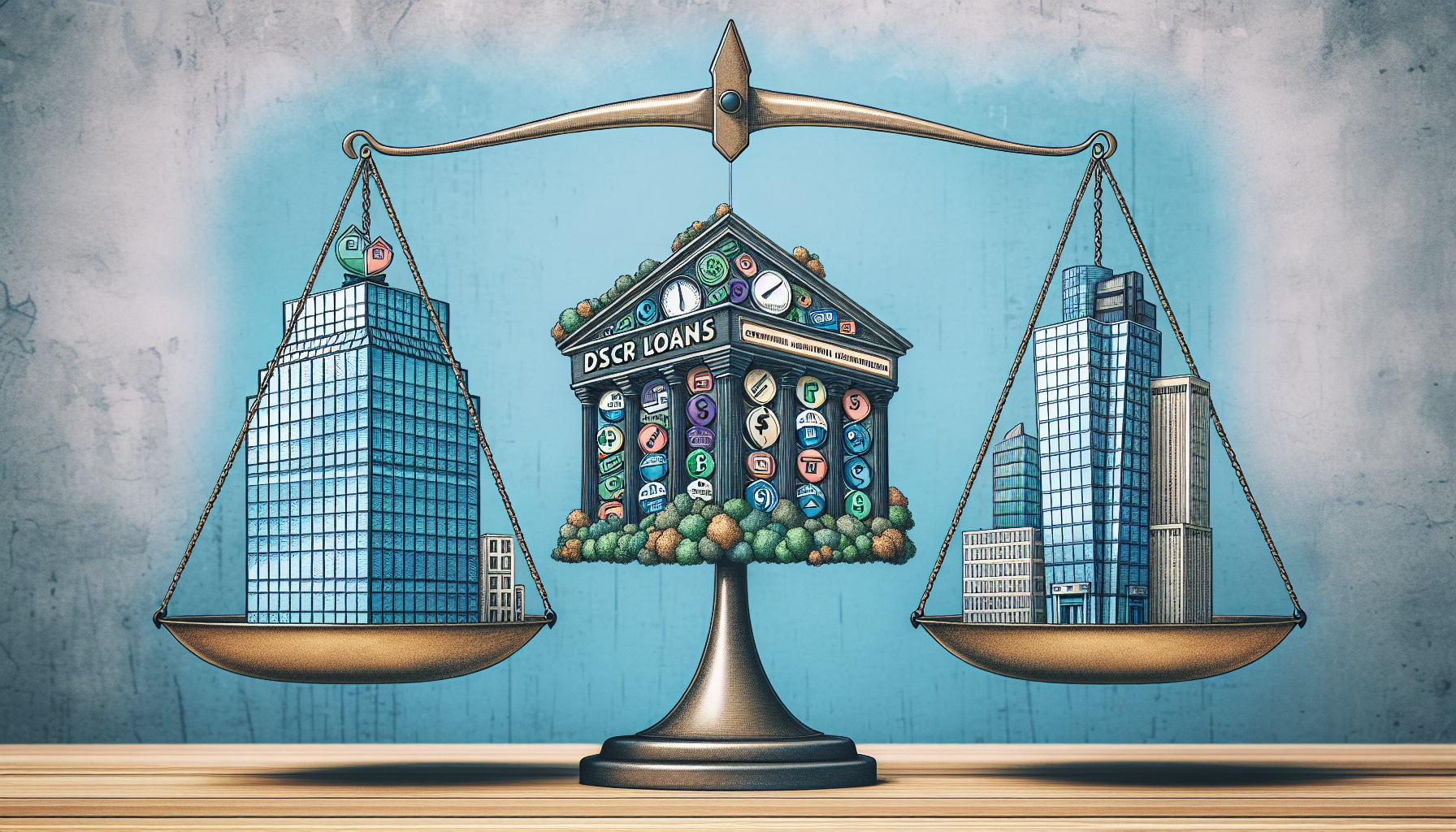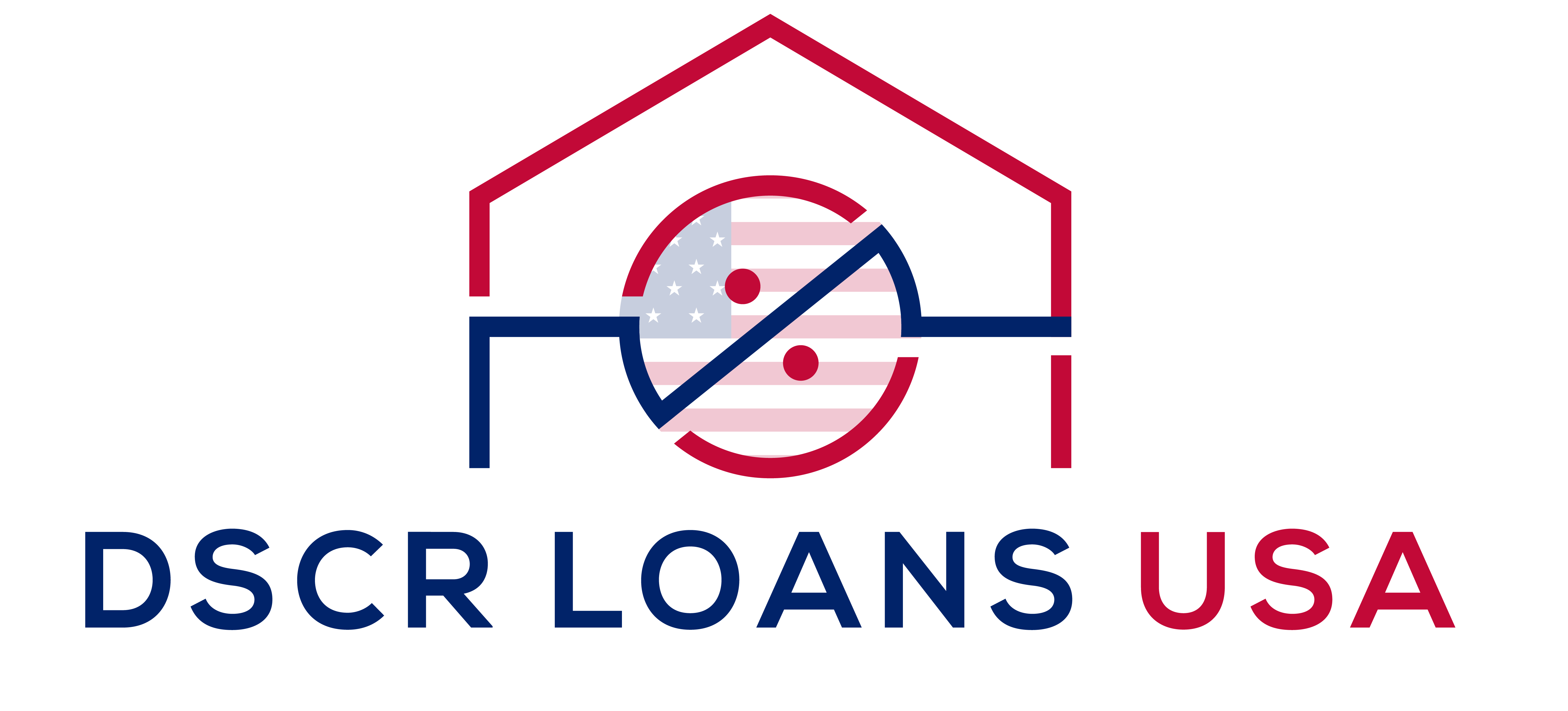DSCR Loans In Maryland
As an investor seeking to capitalize on Maryland’s real estate market, understanding the intrinsics of a DSCR loan Maryland is paramount. Offering an avenue for loan qualification based on property income rather than exhaustive financial documentation, these loans cater perfectly to investors. This article adeptly navigates through the essence of DSCR loans, allowing you to discern how they can be instrumental in your Maryland real estate ventures.
Key Takeaways
- Maryland DSCR loans focus on property income over personal financial history, offering flexible terms like interest-only payments and high LTV ratios, simplifying qualification and investment in diverse real estate.
- A robust rental market, propelled by a strong job sector, steady population growth, and an attractive tourism industry, creates ample opportunities for investors using Maryland DSCR loans for both long and short-term rentals.
- While offering flexibility and rapid funding, Maryland DSCR loans may come with higher interest rates and need careful consideration of terms and limitations compared to traditional financing options.
Understanding Maryland DSCR Loans for Real Estate Investors

Amidst the opportunities that abound in real estate, Maryland DSCR loans stand out as a beacon of hope for those looking to capitalize on the state’s thriving rental market. These non-traditional loans offer a financing solution that’s as unique as the diverse property types they can fund, from chic condos in the heart of the city to expansive office buildings primed for business ventures. With Maryland’s DSCR loans, the door is wide open for the experienced investor to pursue a variety of investment strategies without the stringent requirements of traditional financing.
The beauty of DSCR loans in Maryland lies in their ability to cater to a broad spectrum of borrowers, including the self-employed who may find traditional income verification a hurdle too high to clear. With the state offering such flexibility, investors are empowered to focus on what truly matters: the income potential of their real estate investments, rather than the minutiae of their financial past. This opens up a realm where securing DSCR loans becomes a streamlined process, enabling swift and strategic expansion of property portfolios, particularly within the lucrative rental sector.
Key Features of Maryland DSCR Loans
Maryland’s DSCR loans come with an array of features designed to ease the mind and bolster the wallets of real estate investors. At the heart of these loans is a fundamental shift from personal income verification, such as bank statement loans, to a focus on a property’s net operating income. This paradigm change is a game-changer for investors, freeing them from the shackles of bank statements and tax returns. Moreover, the loans offer tantalizing options like interest-only payments and the privilege of unlimited cash-out on refinances, capped by a generous 80% of the property value.
But the perks don’t stop there. High loan-to-value ratios mean that investors can finance a larger slice of a property’s value with less initial capital, liberating funds for other ventures. And with 30-year, fixed-rate terms, these loans stand as pillars of stability and predictability in the turbulent seas of real estate financing. Add competitive interest rates into the mix, and it’s clear why Maryland’s DSCR loans shine as a beacon for investors seeking both simplicity in qualification and solidity in investment.
Eligibility Criteria for Maryland DSCR Loans
Navigating the course to a Maryland DSCR loan is simpler than one might imagine, but certain beacons must be followed. The minimum DSCR requirement is like the North Star for eligibility – a guiding metric that Griffin Funding sets at 0.75, although some lenders may ask for a DSCR of at least 1.25. This ratio, a measure of a property’s income-generating prowess, is scrutinized during the lender’s evaluation process, ensuring the property can consistently cover the loan payments.
The journey to securing a DSCR loan in Maryland also involves practical considerations, such as a minimum down payment, typically 20%, and perhaps a reserve cushion of six months’ worth of expenses. While personal financial details like credit score are less emphasized, they are not entirely cast aside, offering a more holistic view of the borrower’s financial landscape. For those who prefer a veil of privacy or asset protection, the flexibility to acquire properties under personal names or LLCs is an added boon.
The Growing Appeal of Rental Properties in Maryland

Maryland’s real estate canvas is painted with opportunities, particularly when it comes to Maryland rental properties. Over half of the state’s residents opt for rental accommodations, a fact that highlights the robust demand and spells good news for real estate investors. With property values and taxes on the upper end, roughly 30% of Marylanders choose tenancy, creating a vibrant market for those looking to invest in rental real estate. The diversity of Maryland’s rental markets, stretching from urban hotspots to collegiate hubs, promises attractive capitalization rates for the discerning investor.
The allure of Maryland’s rental market is further magnified by its proximity to the economic fortress that is Washington D.C., which casts a stabilizing aura over the state’s housing market fluctuations. This stability is a magnet for investors, who often find themselves exploring the state’s foreclosure phenomena, seizing properties at rates that are as lucrative as they are affordable. And with a median home value that whispers accessibility, Maryland’s real estate market extends an open invitation to investors to partake in its affordability advantages.
Strong Job Market and Diverse Economy
Maryland’s robust job market acts as a backbone to its real estate sector, driven by a diverse economy that includes biotechnology, healthcare, and government – industries that offer stability and growth. The economic buoyancy resulting from these sectors underpins a positive environment for rental property demand, making it a fertile ground for real estate investments well-supported by the availability of DSCR loans. Add to this the state’s geographical advantage, lying in the shadow of Washington D.C., and the resulting amplified demand for housing becomes an investor’s dream.
The diversity of Maryland’s economic landscape is not just a strength but a strategic advantage for real estate investors. The varied sectors support a mosaic of employment opportunities and a population that values the convenience and flexibility of rental living. This economic tapestry weaves together a rental market that is both vibrant and resilient, offering a reliable stream of tenants and a promise of consistent returns on investment.
Steady Population Growth and Housing Demand
Maryland’s population has been on an upward trajectory, growing in 10 out of the past 11 years, often by 1% or more annually. This influx of new residents fuels the demand for Single-Family Residential properties, as people seek more space and the comforts of home. The steady drumbeat of population growth ensures a consistent demand for rental properties, a reassuring fact for investors who rely on DSCR loans to back their ventures.
The state’s housing market is a reflection of its economic and demographic health. As the population swells, so does the appetite for diverse rental options, which in turn assures investors of a steady income stream from their properties. This stable demand, cushioned by a growing economy, solidifies Maryland as a haven for rental property investments, where the promise of consistent rental income beckons.
Attractive Tourism Sector
Maryland’s charm is not lost on tourists, and neither is the profit potential for vacation rentals. With an average profit of $687 per night, the tourism sector offers a lucrative avenue for short-term rental property investors. DSCR loans in Maryland are not just limited to long-term rentals but are available for short-term properties as well, including those listed on platforms like Airbnb, making them a versatile tool for investors.
To tap into the short-term rental market, investors must provide a history of bookings and receipts for the past 12 months, often sourced from platforms such as Airbnb or VRBO. This requirement ensures that the properties have a proven track record of generating rental income, a key consideration for lenders.
Maryland’s tourism sector, therefore, opens up a realm of profitable investment opportunities, with DSCR loans serving as the key to unlocking these treasures.
Maximizing Returns with Maryland DSCR Loan Strategies

In the quest for maximizing returns, Maryland DSCR loans offer a strategic toolkit for investors. The state presents a canvas where individual creativity can flourish, allowing investors to create a source of passive income through astutely chosen real estate investments. With the advantage of faster closing times, these loans are crucial for investors eager to secure properties quickly, offering funding up to a substantial $5 million for sizable investments.
But how exactly can investors harness the full potential of these loans? Strategies such as purchasing multiple rental properties, harnessing tax breaks and incentives, and investing in property upgrades and renovations can significantly enhance profitability. Let’s dive into the specifics of each strategy and how they can elevate your investment game.
Purchasing Multiple Rental Properties
The ability to finance more than ten rental properties with DSCR loans in Maryland is like having the key to a treasure chest of real estate opportunities. This capability allows investors to scale their property portfolios substantially, providing a competitive edge in the market. With Maryland DSCR loans, the path to financing promising investment properties is both fast and efficient, a boon for those looking to seize the moment.
The strategic use of cash flow from existing rental properties to secure financing for new ones is a masterstroke for growing one’s real estate holdings. And with no maximum number of properties that can be financed as long as the portfolio generates positive cash flow, the sky’s the limit for the seasoned investor. This approach not only diversifies the investment portfolio but also spreads the risk and potential for returns across a broader base, ensuring a more balanced and resilient investment strategy.
Utilizing Tax Breaks and Incentives
Maryland’s tax landscape is dotted with breaks and incentives that can significantly reduce expenses, particularly during the initial years of property ownership. These financial reliefs can be a windfall for investors, whether through renovating properties or improving energy efficiency. Additionally, employing individuals for property management within the state may open doors to further tax benefits.
The recordation tax exemption, expanded in 2020, is a particularly valuable tool, offering the potential to cut closing costs in half or more during mortgage refinancing. Furthermore, investing in property upgrades and renovations in Enterprise Zones not only enhances the value and appeal of rental properties but may also qualify investors for additional tax credits. These incentives, when coupled with DSCR financing, create a potent combination for building wealth through real estate.
Investing in Property Upgrades and Renovations
Maryland DSCR loans offer the flexibility and funds necessary to transform a property from standard to standout. Such financing can be directed toward the acquisition and renovation of single-family properties, including those designated for Section 8 housing. By investing in upgrades and improvements, investors can significantly enhance a rental property’s market value and its potential to generate higher income.
The BRRRR method—buy, renovate, rent, refinance, repeat—is a strategy perfectly suited to the flexibility of Maryland DSCR loans. It enables investors to systematically expand their rental property portfolio by reinvesting the equity from renovated properties into new acquisitions. This approach can lead to a virtuous cycle of property enhancement and portfolio growth, capitalizing on the state’s dynamic real estate market.
Comparing Maryland DSCR Loans with Traditional Financing Options

When weighing Maryland DSCR loans against traditional financing options, the scales tip in favor of DSCR loans in several key areas. These include easier qualification criteria and potentially better terms, which are especially attractive for investors. However, it’s important to note that DSCR loans are not without their limitations, such as higher interest rates, which can be around 1% to 2% above those of conventional loans.
Understanding the advantages and drawbacks of each financing route is critical for making informed decisions that align with investment goals and market conditions. Let’s explore the specific benefits and limitations that differentiate DSCR loans from traditional financing methods.
Advantages of DSCR Loans
Maryland DSCR loans simplify the journey to property investment by waiving the typical income verification requirements, which accelerates the loan approval process. This focus on the income-producing potential of the property, rather than the investor’s personal financial history, is particularly beneficial for those with strong rental properties. Maryland’s property market, with its high property values, further amplifies this advantage, offering capital appreciation opportunities that are ripe for the taking.
The tailored nature of DSCR loans extends to repayment terms as well, which can be customized based on property cash flow, providing investors with a degree of flexibility that traditional loans often lack. Moreover, the ability to purchase properties under an LLC with these loans not only offers asset protection but also separates personal finances from investment ventures, a savvy move for any prudent investor.
Limitations of DSCR Loans
Despite their advantages, Maryland DSCR loans come with their own set of limitations. Some of these limitations include:
- Higher interest rates, typically 1% to 2% above that of conventional loans, which can impact the overall cost of borrowing.
- Potential prepayment penalties, which can influence the strategy for property turnover or refinancing.
- The need for borrowers to thoroughly review the loan documents, as Maryland law requires any fees charged by lenders to be explicitly authorized within these documents, affecting the terms of DSCR loan agreements.
It is important for borrowers to be aware of these limitations and consider them when deciding whether a Maryland DSCR loan is the right option for their needs, especially in terms of maximum loan amounts.
In light of these limitations, investors should weigh the trade-offs between the flexibility and rapid funding that DSCR loans offer and the higher cost of borrowing. Understanding these nuances can guide investors to make financing decisions that align with their long-term investment strategies and financial goals.
Finding the Right DSCR Lender in Maryland

The quest to find the right DSCR lender in Maryland is a journey of its own, blending research and due diligence. Investors stand at a crossroads where both local and online dscr lenders beckon with unique benefits, yet the ideal choice depends on individual needs and investment plans. Comparing rates and services is a crucial step, as it uncovers the best options that can make a tangible difference to the bottom line. Legal decisions, such as the Carrington court ruling, underscore the importance of being well-informed about the legal environment when selecting a DSCR lender, fostering a sense of confidence as investors navigate fees and lender practices.
To embark on this investigative path, investors should consider the array of options available, from the personalized services of local lenders to the rapid pre-approval processes and competitive rates offered by online platforms. The chosen lender will play a pivotal role in the investment journey, making the research phase a critical component of success.
Researching Local and Online Lenders
Researching and comparing lenders is a strategic move that can pay dividends. Online lenders in Maryland bring to the table the convenience of quick pre-approvals, the potential absence of lender fees, and the lure of competitive rates. On the other hand, local lenders offer a more personalized service, potentially accommodating unique circumstances or complex scenarios with greater ease. Griffin Funding, as one example, provides comprehensive coverage for those seeking Maryland DSCR loans, reaching investors in cities like Baltimore and Annapolis.
The choice between a local and an online lender may hinge on factors such as the investor’s preference for face-to-face interactions, the complexity of their investment portfolio, or the need for speed in the approval process. An informed decision can make all the difference in securing favorable loan terms and ensuring a smooth transaction.
Evaluating Lender Reputation and Customer Service
The reputation of a lender and the quality of customer service are the linchpins that can either make or break an investor’s experience. A lender’s reputation in the mortgage industry is often reflected in the quality of customer service, a crucial aspect that can significantly impact an investor’s satisfaction. Robust customer support tools, such as user-friendly apps and round-the-clock service, can enhance a lender’s standing in the eyes of borrowers. Transparency is another cornerstone of a lender’s reputation, with a clear and comprehensive approach to educating borrowers about the loan process being key to establishing trust.
A lender’s willingness to provide detailed information and guidance throughout the loan process is not merely a convenience but a critical factor in the decision-making process for potential borrowers. When lenders demonstrate a commitment to transparency and support, they not only assist investors in making informed decisions but also build lasting relationships based on trust and reliability.
Navigating the Maryland DSCR Loan Application Process
Navigating the Maryland DSCR loan application process is a critical step toward securing the financing necessary for real estate investments. The process commences with the completion of an application form, which may be a standard document or one tailored to the specifics of DSCR loans. As investors embark on this journey, it is crucial to prepare the necessary documentation and have a thorough understanding of the loan terms and conditions, ensuring a smooth and successful application.
The path to a DSCR loan may be less traveled, but it is by no means less rewarding. With the right preparation and an understanding of what to expect, investors can move confidently through the application process, with their eyes set on the prize of a funded investment property.
Preparing Necessary Documentation
To set sail on the DSCR loan application voyage, investors must gather an armada of financial documents. These include:
- A detailed valuation of the property
- Authorization for a credit check with a focus on real estate debt history
- Appropriate property and flood insurance documents, if applicable
- Verification of rental income using tools like lease agreements, appraisals, or 12-month income histories to prove the property’s earning potential
- Bank statements showcasing sufficient liquid assets to cover three to six months of PITIA (principal, interest, taxes, insurance, and association dues) payments, for applications in Maryland
Business entities, such as LLCs, face additional documentation requirements when applying for a DSCR loan. These may include Certificates of Good Standing and Formation, Articles of Organization, and Operating Agreements, which serve to validate the entity’s legal and operational status. By preparing this documentation in advance, investors can streamline the application process, paving the way for a smoother journey toward loan approval.
Understanding Loan Terms and Conditions
Understanding the loan terms and conditions is the compass that guides investors through the sea of financing options. The eligibility requirements and loan terms can vary significantly among lenders in Maryland, with the minimum Debt Service Coverage Ratio (DSCR) being a key term to consider when comparing different loans. Lenders and loan servicers are also required to promptly notify customers of any changes in payment services, including monthly mortgage payments, emphasizing the importance of clear communication in managing and understanding loan conditions.
As investors navigate these waters, they must familiarize themselves with the nuances of their DSCR loans, including interest rates, down payment requirements, and potential prepayment penalties. A deep understanding of these elements is essential for making informed decisions that resonate with investment strategies and financial aspirations.
Summary
As we draw the curtains on our exploration of Maryland DSCR loans, we reflect on the manifold opportunities they present for real estate investors. From the flexibility of no income verification to the strategic advantages of financing multiple properties and harnessing tax incentives, DSCR loans in Maryland stand as a powerful tool in the investor’s arsenal. The strength of the state’s rental market, bolstered by a diverse economy, steady population growth, and a thriving tourism sector, further cements its status as a bastion of investment potential.
To maximize the benefits of DSCR loans, investors must judiciously select the right lender, prepare the necessary documentation, and deeply understand the terms and conditions of their financing. With this knowledge in hand, the path to real estate investment success in Maryland is not just navigable but ripe with the promise of growth and profitability. May this guide serve as your North Star, illuminating the journey to financial prosperity through the wise use of DSCR loans.
Frequently Asked Questions
What is the minimum DSCR required by lenders in Maryland?
Lenders in Maryland usually require a minimum debt service coverage ratio (DSCR) of 0.75, with some lenders requesting a DSCR of at least 1.25 to qualify for a loan. If your current deal is below that, there are some ways to improve your DSCR. When you don’t qualify for a DSCR loan, conventional loans or in some cases, even a quit claim deed could help you secure a property still.
Can Maryland DSCR loans be used for short-term rental properties like Airbnb?
Yes, Maryland DSCR loans can be used for short-term rental properties, such as those listed on Airbnb.
Are there any tax incentives for property investors in Maryland?
Yes, there are tax incentives for property investors in Maryland, such as breaks for property renovation, energy efficiency improvements, and employing local property management. These incentives can help reduce expenses during the initial years of ownership.
How do Maryland DSCR loans compare to conventional loans in terms of interest rates?
Maryland DSCR loans generally have interest rates 1% to 2% higher than conventional loans, so it’s important to factor this in when comparing financing options.
What financial documentation is needed when applying for a Maryland DSCR loan?
When applying for a Maryland DSCR loan, you will need to provide property valuation, credit check authorization, property and flood insurance documents, rental income verification, and bank statements showing liquid assets to cover PITIA payments for three to six months. These documents are essential for the loan application process.
Ready for More Great Tips and Information? Join Our Email List Today!


Leave a Reply